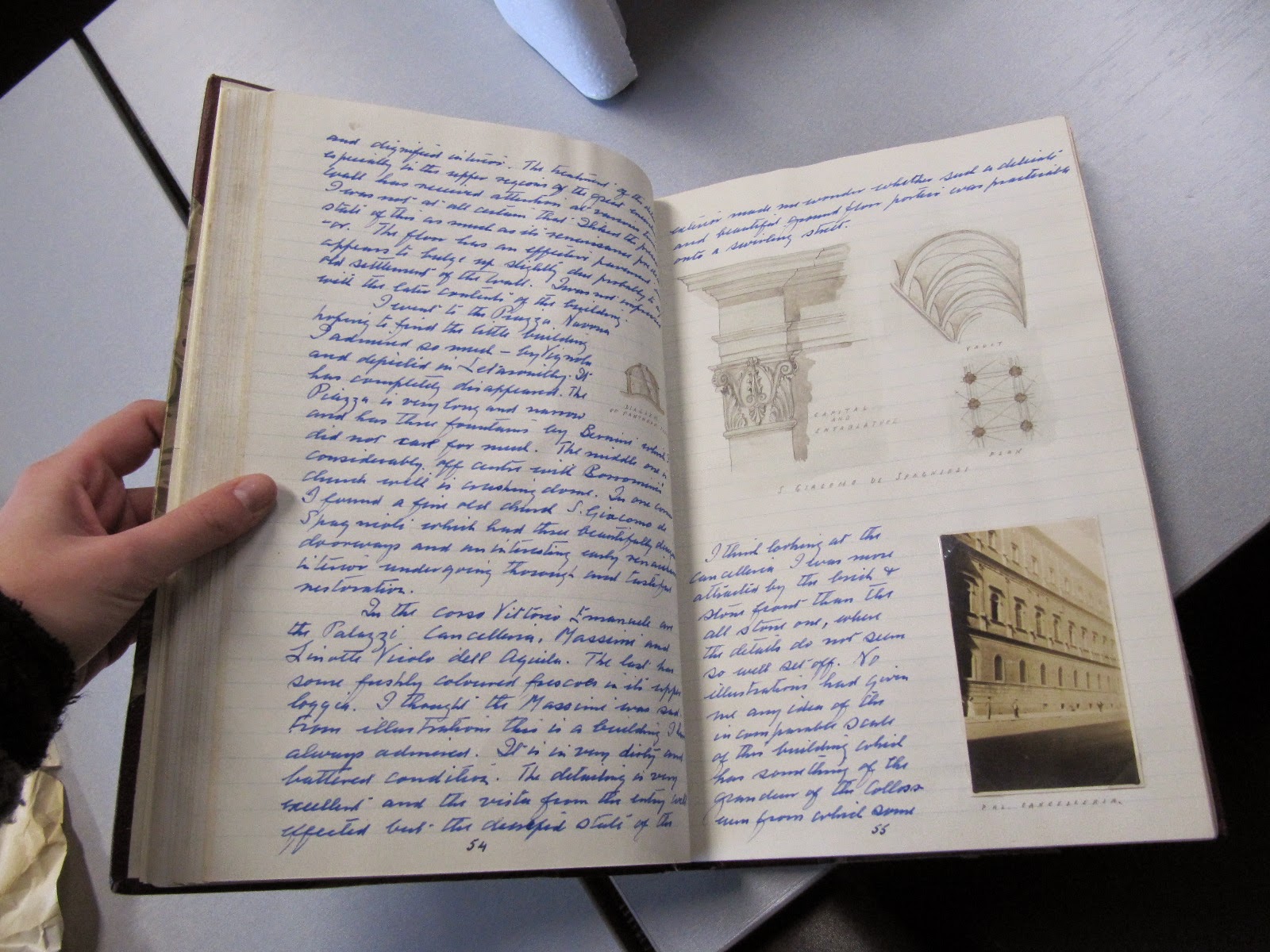I am very lucky to have just spent five days working at The National Archives in Kew as part of the ‘Transforming
Archives’ programme with seventeen other trainees from archives across the UK.
 |
| The National Archives buildings are impressive and surrounded by a lovely swan inhabited pond. |
During our visit we were given a behind the scenes tour of the archives. We saw how material from one building to the next were transferred via motorised trikes and lifts when they were requested for viewing by the public. It was interesting to see the process of when someone requests a document, and how it is electronically tracked through every stage of its movement through the building quite like an airport system.
The storerooms are full of archival treasures from 1000 years of history, and there was one room which particularly sparked my curiosity. We were shown only the door as its contents were so valuable and secretive just very few in the whole organisation had the key. You could only imagine what was inside!
Archivists are very skilled!
The staff were all very welcoming and experts in their
fields. There is a lot of skill involved with being an archivist. We learned about the importance of archives, what makes an archive
valuable and the potential barriers to public access. As archivists are now embracing the digital age, new skills need to be learned and standards need to be developed, for example with social media and 'born digital' records.
We spent each day working on a
variety of skills and exercises that are important in the archives profession,
such as pitching for funding and evaluating the success of outreach projects,
as well as traditional skills such as preservation standards, accessioning
(documenting the receipt of archives in your repository) and appraisal
(selecting documents for permanent preservation in the archive).
We also had a
session on blogging and created our own VoxPop videos (link to come later!)
about ourselves and what we were doing in each of our traineeships, and looked
at the use of virtual classrooms with the education team.
Digitisation on a Large Scale
As I am working on several digitisation projects this year, such as the Francis Johnson Grand Tour Diary, I
spent an afternoon with the Commercial Delivery team. Each member of staff was
part of a group that had a different but equally important role in the
digitisation process. I spoke to staff beginning in the commission and
acquisition of jobs, then to image capture on the overhead cameras, to quality
checking each image and then the final transfer of the files to the customer.
It was interesting to see how a large scale organisation manages the files from
each aspect of the process and how there is a procedure for rectifying errors
such as missing pages or poor scans. I came away from that afternoon with a
better knowledge of digitisation both as a commercial and preservation
activity. It can increase accessibility to material that are at risk of being
lost by no longer creating damage through handling, particularly to fragile
documents. In the wider world of
heritage, digitisation as a service can also support not only archives
services, but museums, historic sites and libraries too.
 |
| The Domesday book on an interactive touchscreen |
Interactive Virtual Books
There was one use of technology within the public space of
the archives which I thought was particularly useful for heritage
interpretation. I was able to explore William the Conqueror’s Domesday Book on
an interactive touchscreen within The National Archives ‘Keeper’s Gallery’ exhibition
space. The touchscreen uses the ‘Turn the Page’ software to allow the user to leaf
through pages and interact with the book using magnify and rotate features. I
will be using similar software for the Francis Johnson Grand Tour diary
project, and it was interesting to see an example of the technology being used
and to experiment with its features.
This past week I have particularly enjoyed meeting the other
trainees from services across the UK and learning from a range of perspectives
and experiences. We will be meeting each other again for visits at each other’s
archives to discuss each other’s services and learn from each other’s experiences which I think will be highly beneficial. I will be
blogging about these in the near future! We have also been using the Twitter hashtag
#TransformingArchives if you would like to keep up with the latest news from myself and the rest of the trainees as there will be much more to come.
Overall, I have learned over the course of my week is that archives need to be creative to survive. We need to engage with new methods of archives interaction and outreach to new audiences to make archives more accessible. But we also need to carefully reflect on our engagement methods by considering funding, audiences and how it will ultimately affect the archive in the long term.
Hannah Rice
Transforming Archives Trainee
H.Rice@hull.ac.uk






